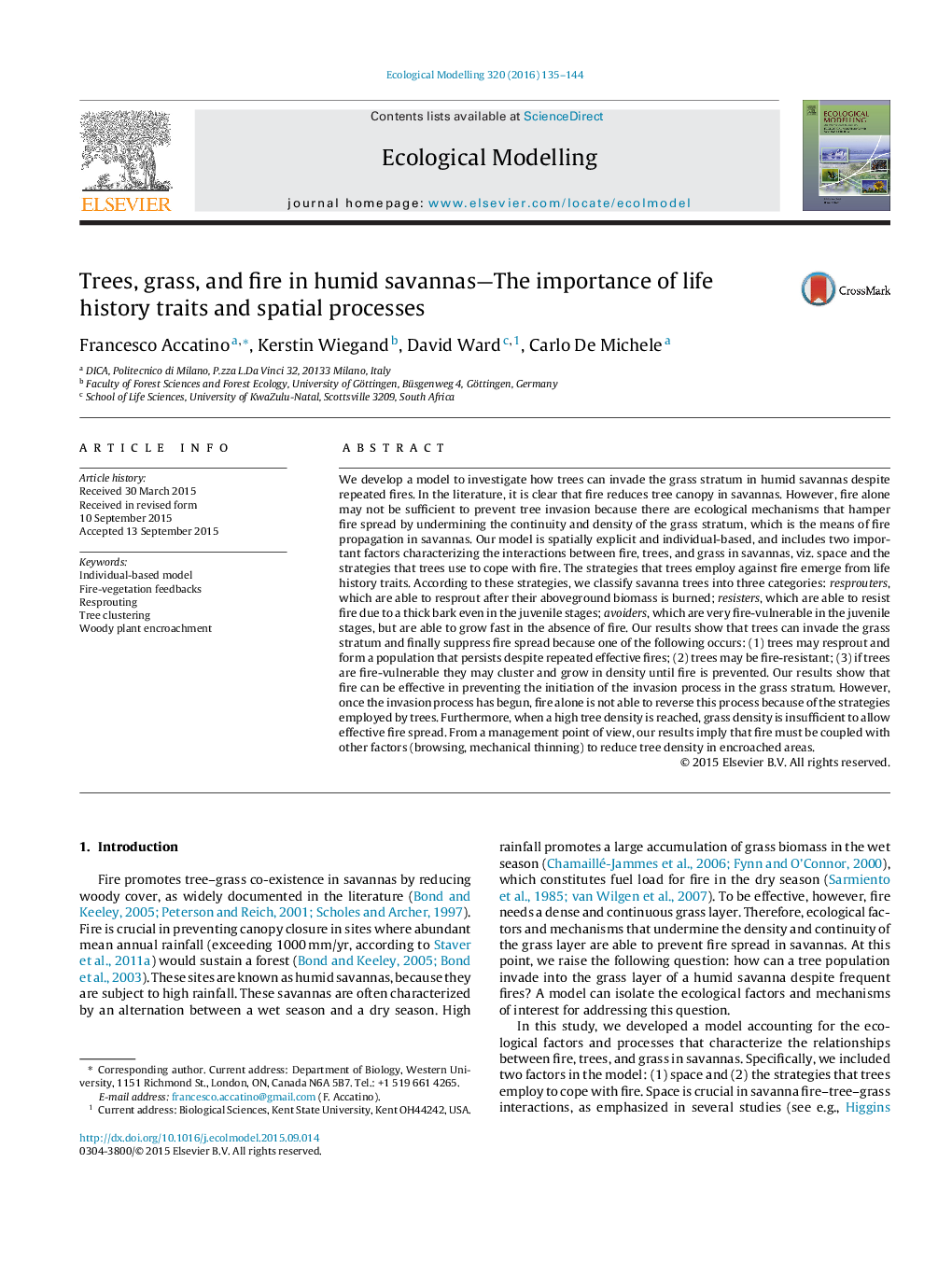| Article ID | Journal | Published Year | Pages | File Type |
|---|---|---|---|---|
| 6296249 | Ecological Modelling | 2016 | 10 Pages |
Abstract
We develop a model to investigate how trees can invade the grass stratum in humid savannas despite repeated fires. In the literature, it is clear that fire reduces tree canopy in savannas. However, fire alone may not be sufficient to prevent tree invasion because there are ecological mechanisms that hamper fire spread by undermining the continuity and density of the grass stratum, which is the means of fire propagation in savannas. Our model is spatially explicit and individual-based, and includes two important factors characterizing the interactions between fire, trees, and grass in savannas, viz. space and the strategies that trees use to cope with fire. The strategies that trees employ against fire emerge from life history traits. According to these strategies, we classify savanna trees into three categories: resprouters, which are able to resprout after their aboveground biomass is burned; resisters, which are able to resist fire due to a thick bark even in the juvenile stages; avoiders, which are very fire-vulnerable in the juvenile stages, but are able to grow fast in the absence of fire. Our results show that trees can invade the grass stratum and finally suppress fire spread because one of the following occurs: (1) trees may resprout and form a population that persists despite repeated effective fires; (2) trees may be fire-resistant; (3) if trees are fire-vulnerable they may cluster and grow in density until fire is prevented. Our results show that fire can be effective in preventing the initiation of the invasion process in the grass stratum. However, once the invasion process has begun, fire alone is not able to reverse this process because of the strategies employed by trees. Furthermore, when a high tree density is reached, grass density is insufficient to allow effective fire spread. From a management point of view, our results imply that fire must be coupled with other factors (browsing, mechanical thinning) to reduce tree density in encroached areas.
Related Topics
Life Sciences
Agricultural and Biological Sciences
Ecology, Evolution, Behavior and Systematics
Authors
Francesco Accatino, Kerstin Wiegand, David Ward, Carlo De Michele,
